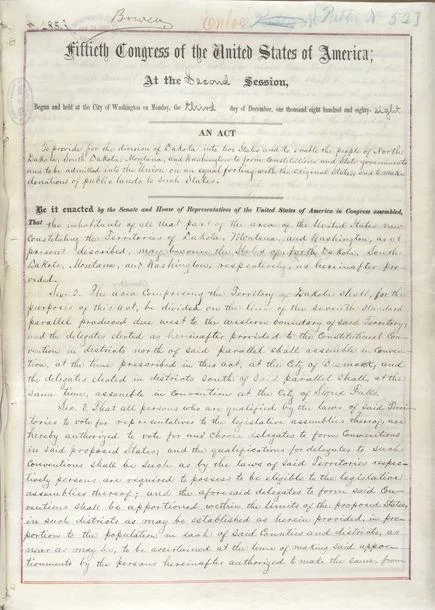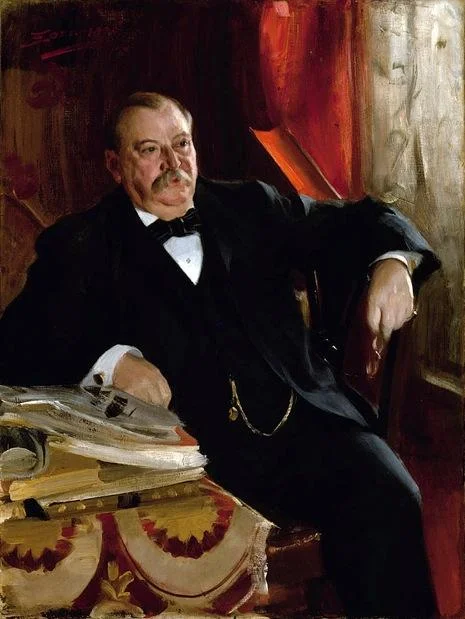President Grover Cleveland, the 22nd and 24th president of the United States, served two non-consecutive terms from 1885 to 1889 and 1893 to 1897. | National Portrait Gallery
President Grover Cleveland, the 22nd and 24th president of the United States, served two non-consecutive terms from 1885 to 1889 and 1893 to 1897. | National Portrait Gallery
On February 22, 1889, President Grover Cleveland signed the Enabling Act, which authorized the division of the Dakota Territory and set the stage for the admission of North Dakota, South Dakota, Montana, and Washington into the United States.
The act outlined the process for these territories to draft state constitutions and establish state governments, according to the state of North Dakota.
It mandated that the Dakota Territory be split along the seventh standard parallel, creating North Dakota and South Dakota. Delegates from districts north of this line were to convene in Bismarck, while those from the south would meet in Sioux Falls.

The Enabling Act of 1889, signed into law on February 22, 1889, paved the way for the creation of North and South Dakota, as well as Montana and Washington, by authorizing their residents to form state constitutions and governments.
| Senate.gov
Eligible voters in these territories were empowered to elect delegates for constitutional conventions. The qualifications for these delegates mirrored those required for territorial legislative assemblies.
The act specified that each district would elect three delegates, with voters permitted to vote for two candidates. The governors, chief justices, and secretaries of the territories were responsible for apportioning delegates and organizing elections.
The Enabling Act required that the proposed state constitutions be republican in form and not conflict with the U.S. Constitution or the Declaration of Independence. It also stipulated that these constitutions make no distinction in civil or political rights based on race or color, except for non-taxed Indigenous peoples.
Following the act’s provisions, delegates in North Dakota convened in Bismarck on July 4, 1889, to draft the state’s constitution. The document was ratified by voters on October 1, 1889.
On November 2, 1889, President Benjamin Harrison issued a proclamation admitting both North Dakota and South Dakota into the Union as the 39th and 40th states.






 Alerts Sign-up
Alerts Sign-up